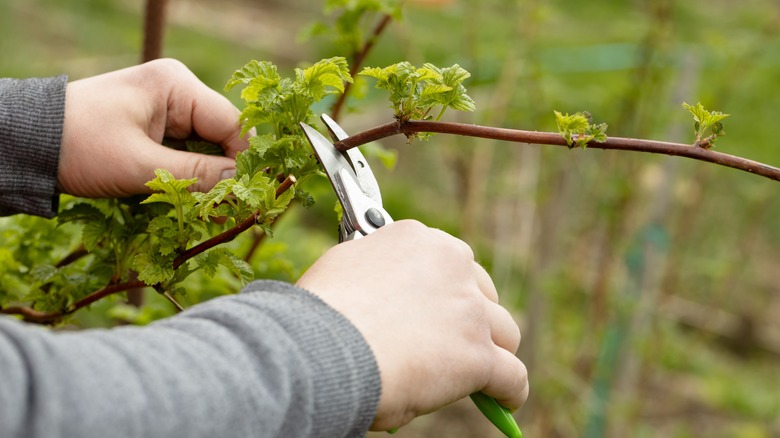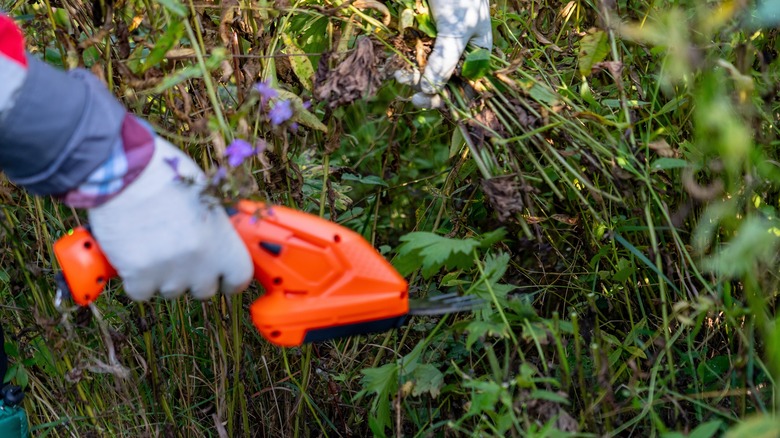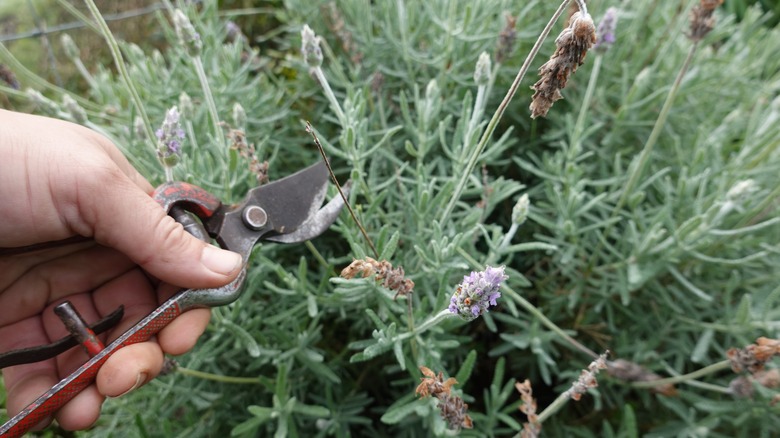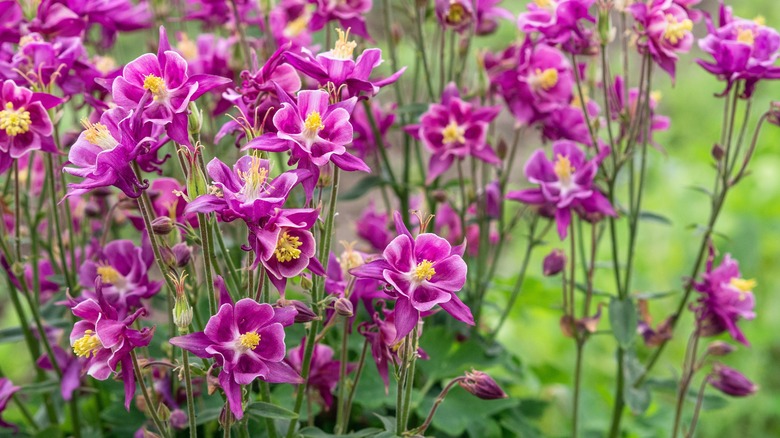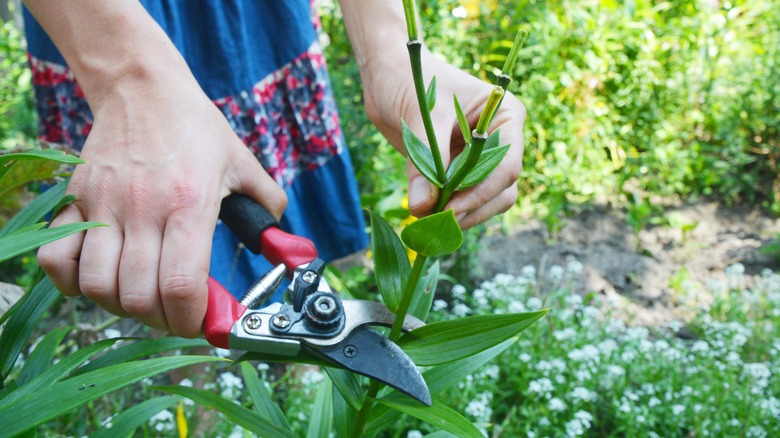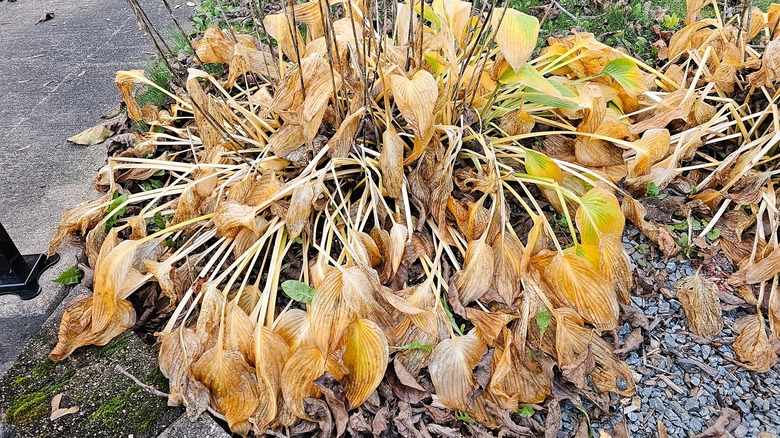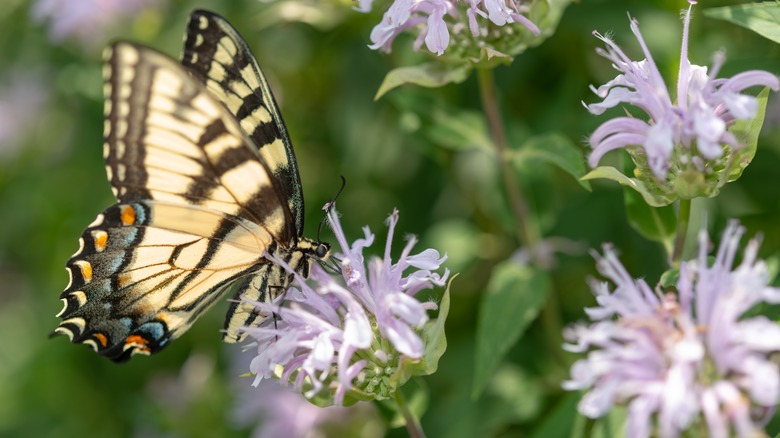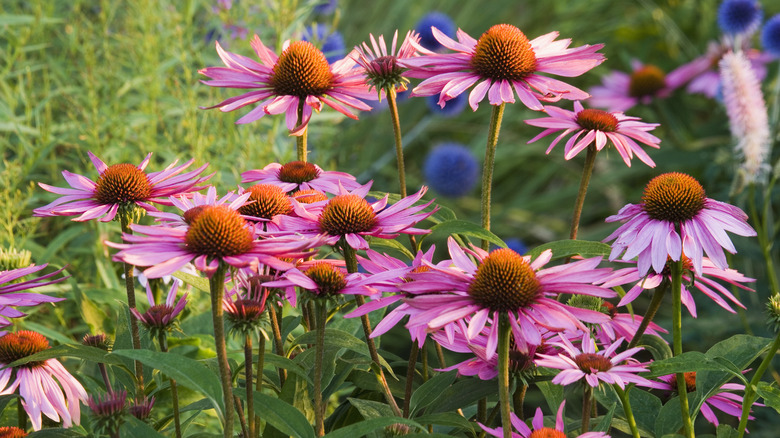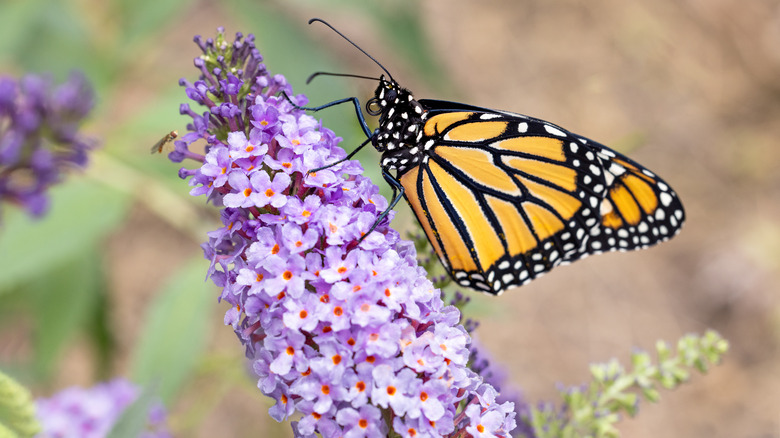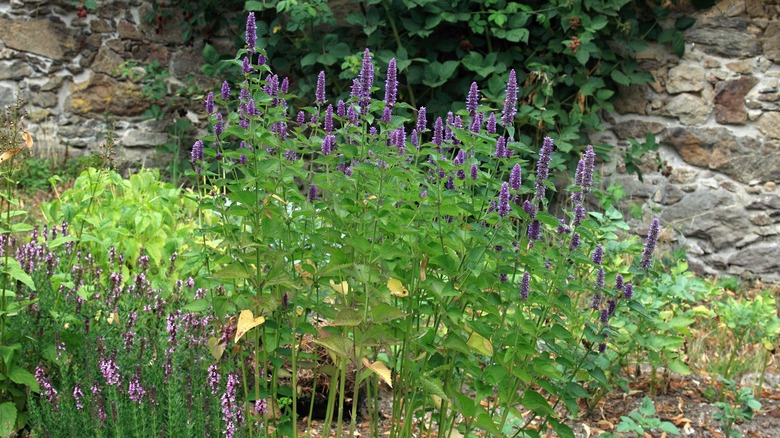6 Plants You Should Be Pruning In The Fall (& 3 You Can Skip)
As the warm summer breeze fades and is replaced by the increasingly cooler fall temperatures, you may be thinking about what you need to do to make sure your lawn and garden is ready. Not only do you want to make sure that your plants make it through the colder months that are on the way, but you want to be confident that they're set up for success next spring and summer when they will once again be graced with vibrant green leaves and beautiful flowers. But, even more than this, you also want to make sure that you are doing your part to protect the beneficial insects, such as pollinators, and other animals that also need to make it through the winter to see the coming spring.
Pruning plants is one important fall gardening task as you get everything in order. However, while there are many plants you should prune towards the end of summer or in the early fall, there are others that it would be a mistake to cut back at this point. Below, we've put a list together to help you learn what to prune in the fall, along with what you'll want to avoid cutting back. While some researchers and professional gardeners may not be in 100% agreement about when it is best to prune certain plants, you should find some guidelines to get you on your way below.
Deadhead phlox in the fall to maintain a neat garden
As summer turns to fall, it is time to pull out your pruners and deadhead your phlox. While this plant can add beauty to your garden when it's in full bloom, it also doesn't clean itself. So, after the flowers have come and gone, you're going to want to clean it up to keep your garden from looking sloppy or overgrown. Even more than this, however, you'll want to cut phlox back to protect it against disease. If not pruned, it is more likely for phlox to get infected with powdery mildew before next spring.
The best pruning method will depend on the specific variety of phlox in your garden. If you have creeping phlox, you should be able to knock the remains of the blooms off using your hands. To prune taller varieties, you'll need a pair of hand pruners. Use them to cut off any blooms (also called deadheading) on the plants. If any stems are dead, you'll want to cut them back, nearly all the way to the ground. After pruning phlox, be sure to properly discard the cuttings. Do not compost them, but instead throw them out in a sealed bag to prevent spreading any potential infestations. Similarly, you should also clean your pruning shears before moving onto any of the other plants in your garden.
Prune lavender in the late summer or early fall to help encourage new growth
Knowing when to prune lavender is essential — both for the overall health of the plant and for ensuring it grows how you want it to. The best time to prune lavender is right after it has finished flowering. This timing may vary depending on the region of the country in which you live, but for most should be towards the end of the summer or the beginning of fall. One key thing to keep in mind, however, is that you don't want to put off pruning lavender and end up getting too far into the fall before completing the task. When freshly pruned, lavender is more likely to be damaged by colder temperature. For this reason, it is advised to complete the final pruning at least six weeks before the first frost is expected.
Beyond getting the timing right, there are other important things to consider when pruning lavender. To avoid making common lavender pruning mistakes, make sure you start with clean and sharp pruning shears. When cutting the lavender, consider its shape and whether there are any modifications you want to make for the following year's growth. For example, if growth was too heavy on one side, you might want to cut that section farther back than the rest (which should be cut about an inch away from the wood).
Keep columbine looking its best by pruning during autumn
If you want to keep your columbine flowers looking their best — both for the coming colder months and for the future warmer spring and summer weather — it is important to prune it regularly. A harder pruning is necessary in the fall or spring, depending on where you live. Those who live in a moderate climate will want to cut their columbine plants back in the fall, ahead of the first frost. Doing so will help remove any torn or jagged leaves. Beyond that, it will also help prevent any insects that may be present from continuing to pose a problem to the plant — and from still being present when it starts growing again as the weather warms up.
When you're ready to prune columbine in the fall, use clean and sharp pruning shears to cut back all the stems and leaves. You only want a few inches of the stems to remain. After pruning, you can help prevent the roots from getting damaged during the colder winter by spreading straw over them. Aim to provide a thicker covering — about 3 inches or so — to provide better insulation and protection.
Deadhead lilies in late summer or early fall to encourage new flowers the following season
There is mixed evidence on when to deadhead lilies, but if your lily's flowers are spent by fall, you'll want to add "deadheading lilies" to your gardening to-do list. These plants are generally not relied on by animals in the winter, so leaving them unpruned won't offer real benefits to wildlife. Plus, if you take care of pruning them in the fall, it will be one less thing you need to worry about during the spring when you have lots to do to get your garden ready for the new growing season.
When you're ready to deadhead your lilies, pick up your clean and sharp pruning shears. Unlike some other plants that you want to cut back to only a few inches above the ground, you will want to leave your lilies more intact. Aim to just cut the flower heads off, leaving the main stem and the majority of the leaves intact. This will help ensure the plant has plenty of food to start the next growing season.
Cut back hostas after the first fall frost
Hostas can continue adding beauty to your garden throughout the early fall. However, after that first frost, it is essential that you cut them back. This has much more to do with just keeping a droopy looking plant out of your garden. There are often many slug eggs hiding in hosta leaves. So, if you fail to cut them back, there will be an abundance of slugs next season to threaten your new hostas — and all the other plants in your garden.
While you do want to cut hostas back for the winter, you don't want to do it earlier than is necessary. Waiting until later in the fall when the leaves are wilting will help ensure that the carbohydrates have moved to the crown, setting the plant up for future health and success. When you are ready to prep your hostas for the winter, use your pruning shears to trim the stalks right where they come out of the ground. After cutting back your hostas, make sure to discard the leaves properly. Remember, there are likely slug eggs lurking, and you want to make sure they don't have the chance to hatch near your garden.
Prune bee balm to avoid mildew infestations
Bee balm can make a gorgeous addition to your garden in the summertime. It is also a favorite of pollinators, such as hummingbirds and butterflies. Especially if your main goal is promoting new growth for the next year, fall is the best time to prune this plant. A good guideline is to do some pruning after it starts dying back (following the first frost). This may also help you to prevent the plant from becoming infected with powdery mildew.
During the growing season, deadheading the faded flowers can help facilitate new seasonal blooms. In the fall you'll want to cut the plant back much further than this. Use your clean and sharp pruning shears to cut the entire plant almost all the way down to the surface of the soil. Carefully remove all of your cut leaves and stems and be sure to dispose of them properly (bag them and do not put them in your compost pile).
Leave purple coneflowers unpruned to avoid taking away a food source for birds
While the purple coneflowers in your garden aren't going to be as pretty during the fall and winter as they are in the summer, you shouldn't prune them in the fall. Throughout the fall and winter, they serve as a source of food for the birds. During these months when food is more scarce for our feathered friends, goldfinches and other birds can find a snack from the seeds of these plants.
Fortunately, purple coneflowers are cold-tolerant. If you just planted them, you may want to provide some insulation around their base with mulch, but after that they should fare well through the colder months. You can prune the coneflowers in the early spring or late winter ahead of the new growing season to get them ready for new blooms. Use a clean pair of bypass pruners or garden scissors to make a clean cut just above the surface of the soil.
Hold off on pruning butterfly bushes until the late winter to facilitate growth
If you're trying to decide when to cut back a butterfly bush, you'll want to avoid doing so in the fall. Pruning in the fall, and especially the winter, can limit the plant's growth. This is because butterfly bushes bloom on their new growths, so if you prune these off at the wrong time, you may be disappointed when the plant is supposed to bloom. Pruning in the winter is one of the worst choices you could make because of the plant's hollow stems. If you cut these back when it is cold, it is more likely that water will build up in the stem, causing the wood to split when the water freezes.
Instead, the best time to prune a butterfly bush is in the very late winter or early spring. Cutting the plants back at this time will help encourage the plant to have new growths, and, thus, more flowers. Keep in mind that your butterfly bush doesn't necessarily need to be pruned every year. If it isn't looking overgrown or taking up more space than you have available for it, it is perfectly fine to wait another year or so before cutting it back.
Help anise hyssop make it through the winter by skipping a fall pruning
Anise hyssop is another plant you'll want to avoid pruning in the fall. If you cut it back, it will be more likely to be killed by the colder temperatures in the winter. Conversely, leaving the plant unpruned, will increase its chances of making it through the winter. With more leaves and flowers, it will be better insulated from the plummeting temperatures. The leaves and remains of the flower heads will also help to hold some of the snow that falls, keeping it farther away from the plant's roots.
So, when should you prune anise hyssop? You can cut the plant back early in the spring, before new growths show up. While not necessary, you can also continue pruning throughout the spring and early summer to keep the plant looking its best. Deadheading this plant will also help encourage new blooms. However, once you hit the middle of the summer, you'll want to stop pruning it to make sure you don't set it up for failure during the winter.
